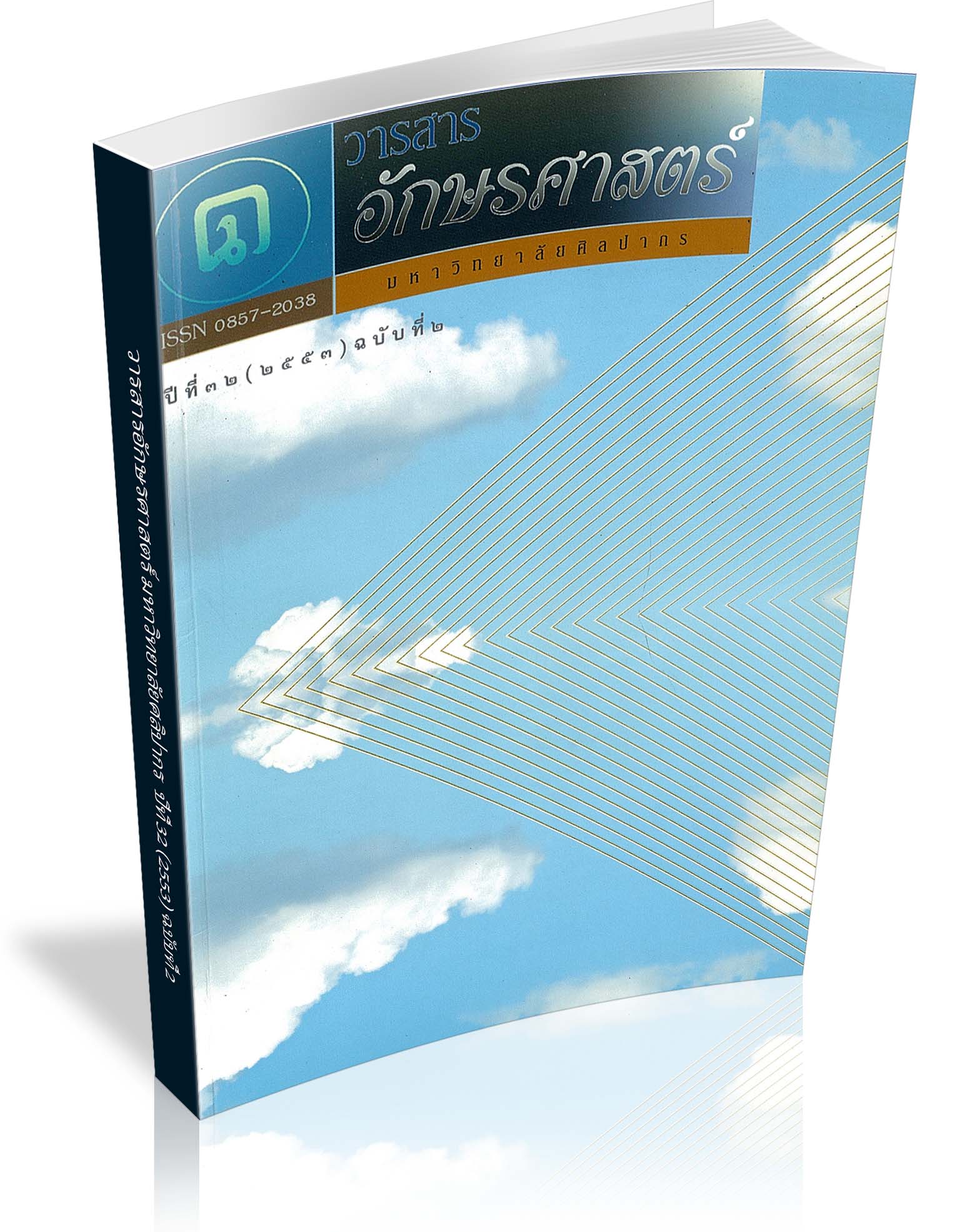German Tenses and Thai Aspect Markers : A Contrastive Study
Keywords:
German, Thai, tense, aspect marker, contrastive studyAbstract
This study compares use of tenses in German and Thai aspect markers with their counterparts by analyzing four Thai and four German contemporary short stories and their translations into the other language. Its objective is to classify Thai aspect markers and explore their conceptual relationship with the German tenses. The analysis shows that five German tenses are used in the corpus : Prasens (present), Prateritum (preterite), Perfekt, Plusquamperfekt (pluperfect) and Futur I (future 1). Thai aspect markers found can be divided into 4 groups, namely 1) perfect 2) perfective 3) imperfective and 4) prospective aspects. These four groups interact with the German five tenses. While the German tense system shows a distinction between past and non-past, Thai, where tense is a non-obligatory grammatical category, shows a tendency of future vs. non-future marking and relative temporal relation. The German tense system is rich in past tense forms whereas it lacks forms which mark posterior or prospective events. The German Perfekt and Plusquamperfekt (pluperfect) also show related conceptualization of aspectuality when considered from the perspective of the Thai aspect system.
Downloads
References
นววรรณ พันธุเมธา. ไวยากรณ์ไทย. พิมพ์ครั้งที่ ๔. กรุงเทพฯ : โครงการเผยแพร่ผลงานวิชาการ คณะอักษรศาสตร์ จุฬาลงกรณ์มหาวิทยาลัย. ๒๕๕๑.
Comrie, Bernard. Tense. Cambridge : Cambridge University Press. 1985.
DUDEN. Grammatik der deutschen Gegenwartssprache. 6., neu bearb. Aufl. Mannheim etc. : Dudenverlag. 1998.
Ek, Britt-Marie. Das deutsche Präsens. Stockholm : Almqvist & Wiksell. 1996.
Engel, Ulrich. Deutsche Grammatik. Heidelberg : ludicium. 1996.
Downloads
Published
How to Cite
Issue
Section
License
ผู้เขียนบทความต้องยินยอมในข้อกำหนดต่าง ๆ ของวารสารก่อนส่งบทความตีพิมพ์




